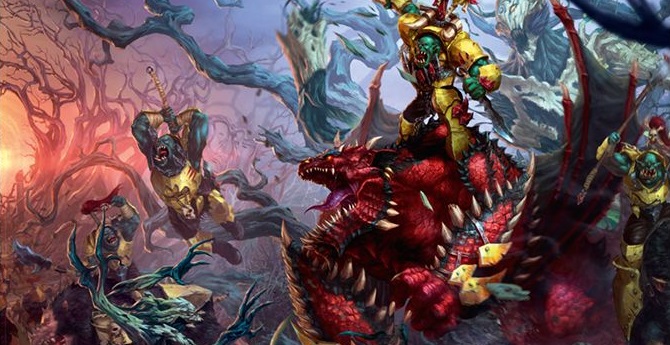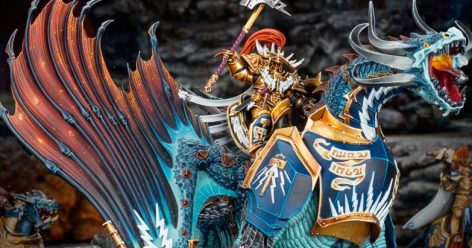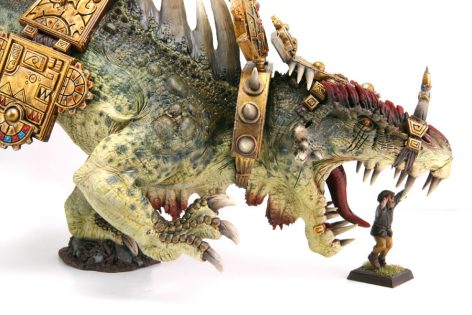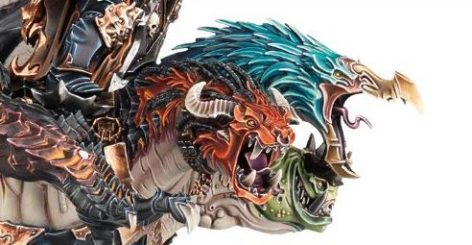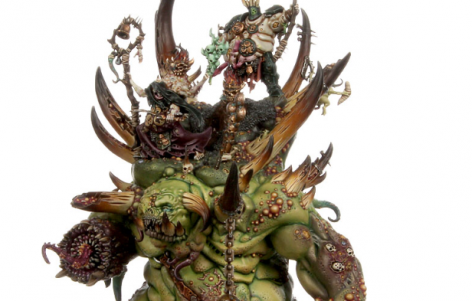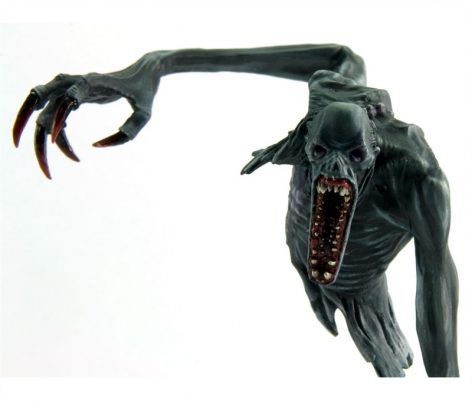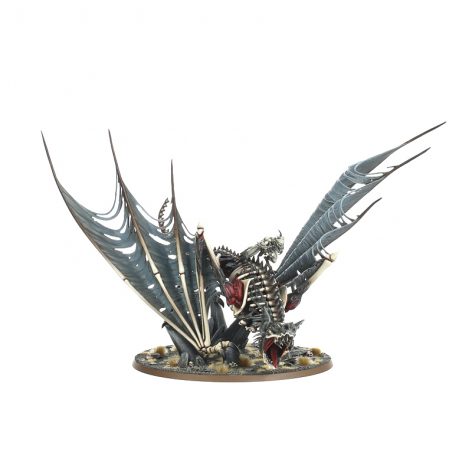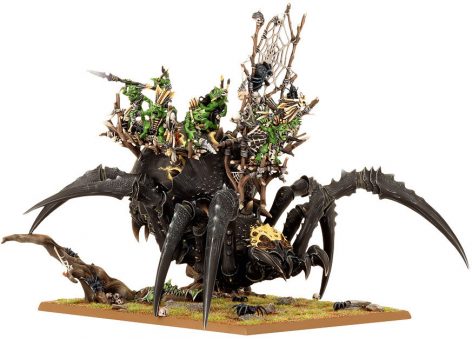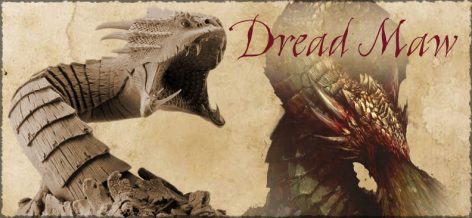Age of Sigmar: Gaming with Behemoths
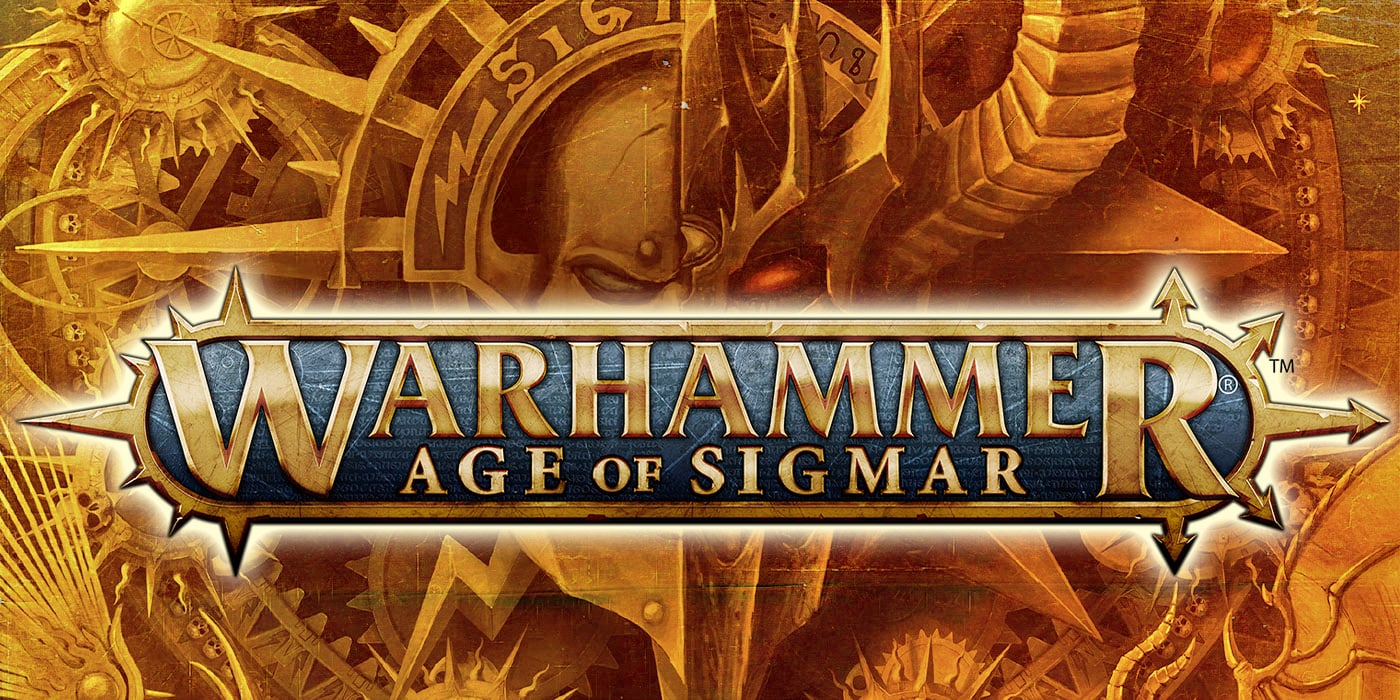
Warhammer 40k isn’t the only game with titanic lords of the battlefield! Bring forth the GIANT Beasties!
Warhammer 40k isn’t the only game with titanic lords of the battlefield! Age of Sigmar swings that way too, I daresay, more fairly and well-balance even! With the General’s Handbook out, Forgeworld’s Monstrous Arcanum warscrolls, and the biggest baddies & gargantuan good guys in every major Battletome, it has never been easier to add massive monsters to your army.
So what makes a TRUE monster in Age of Sigmar? Well the number of Wounds is a good place to start- most mid-range monsters have between 10 and 12 wounds, while only the largest have 14 or more. Real monsters also have either a good save (4+ or better), some way to recover wounds, or an ability that makes them a real boon to the rest of your army. Beyond that, the number of potential wounds worth of damage they can inflict is also essential.
Below we take a look at eight such monsters that stand head and shoulders above anything else in the game.
Order Grand Alliance:
Extremis Chamber – Lord Celestant on Stardrake
This is the dragon to beat all dragons. Bigger (and cooler looking, in my opinion) than any dragon from the Warhammer World of old, the Stardrake strikes an imposing figure as the centerpiece of your army, and has the stats to back it up. 16 wounds with a 3+ save provides resilience in spades, re-rolling save rolls of 1 thanks to its Sigmarite Thundershield (which ALSO damages enemies within 3”) adds a further layer to this beast’s defensive repertoire, making sure you won’t lose your Stardrake early in the game. 12” flying movement also allows it to stay out of trouble or short ranged enemies, so you should be able to pick and choose your fights easily enough.
Offensively, the Lord Celestant on Stardrake has 7 base attacks with weapons (3 for the Lord Celestant’s hammer or blade, 4 for the Drake’s claws). Then on top of these, it has Cavernous Jaws, which can attempt to swallow enemy models whole up to 3 times- based on a dice roll that must result in a number over the enemy model’s wounds, so it’s great for removing standard 5-wound heroes and other units). The Celestant can tack on D3 extra attacks when the model charges, and if he’s equipped with a stormblade, can make 3 Wound rolls if he rolls a 6+ to hit on his attacks. The drake can also mortally wound D3 enemies at the end of combat and force D3 wounds on a number of enemy units in range of its two “breath weapon” attacks (Roiling Thunderhead and Rain of Stars). With the best possible rolls (pretty much 6s on everything) the Lord Celestant on Stardrake can inflict somewhere in the range of 60+ wounds in a single turn if the unit charges. There’s a reason these guys cost 600 points!
Seraphon – Dread Saurian
Forgeworld’s massive resin brick in the shape of a dinosaur, the Dread Saurian is just as much of a monster as its price tag would lead you to believe. This reptilian beast boasts 16 wounds, a 3+ save and Bravery 10 – it won’t be running away or dying any time soon. To keep it in the fight even longer, the Dread Saurian has Glyphs of Hunger, allowing it to heal wounds on a turn in which it damaged any enemy units! It has a debuff to enemy bravery, and is also tailor-made to tackle enemy monsters with its Devourer of Beasts special rule, and with 2D6 Raking Claws attacks and 4 Gargantuan Jaws attacks dealing D6 damage apiece, it will certainly tear huge chunks out of an enemy unit or another Behemoth.
Chaos Grand Alliance:
Everchosen – Archaon
You knew this one would be here, he’s a beast and a half with bucketloads of wounds, a 3+ save, maxed out bravery, and can instantly slay ANY model with a lucky roll using his Slayer of Kings. He is protected in numerous ways with Triple-Headed Monstrosity affording him either extra damage, healing D3 wounds, or magical shenanigans. And of course, as the leader of a huge Chaos warhost, he provides numerous buffs and a command ability to his army.
Rotbringers – Glottkin
The triplets of terror are still rolling strong after the destruction of the Old World. The Glottkin are a hearty, high-profile monster that provide that trifecta of resilience, spellcasting, and command ability. Dealing extra wounds to enemies when they pile in, as well as debuffing enemy Bravery, this is one model you really want to fight from a distance. The Glottkin have power there too, however, with a 12” ranged attack and a powerful spell that can make their army much more resilient! 18 wounds and a decent 4+ save, plus regenerating D3 wounds every turn keeps the Glottkin in the fight for a very long time. Able to deal 39 wounds on an enemy unit they’ve shot at and charged, the Glottkin are definitely not to be trifled with, and EVERY attack they make with their weapons rends for some value, so they will make short work of all but the most elite units.
Death Grand Alliance:
Monstrous Arcanum – Mourngul
It’s not a massive model, and it doesn’t have 14+ wounds, but hear me out. The Mourngul is the Death faction’s greatest asset. Technically part of the Nighthaunt and Malignant sub-factions, this beast can turn the tide of battle on its own. This thing is ethereal, meaning it’s ridiculously hard to wound. Furthermore, it’s sole weapon- “Nightmarish claws and fangs” – are brutal, rending, deal a lot of damage with a high number of attacks AND add more attacks for every 6+ rolled to hit, and RAW those bonus attacks keep piling on more if they do the same, so until FAQ’d this thing can keep trampling through an entire unit or rip apart another monster if you’re rolling hot. And if you want your friends to hate you, the Mourngul can also be summoned by Death wizards!
Flesh-Eater Courts – Abhorrent Ghoul King on Terrorgheist/Zombie Dragon
While not in the same weight class as Nagash (who could, of course be on this list, but he has SO many abilities and powers it could make for an article all its own), the Zombie Dragon or Terrorgheist-riding Ghoul King is nonetheless an army-leading beatstick/support character for any army of insane undead monstrosities. As a flyer, it can stay out of the worst trouble spots or terrain, and with a decent ranged attack on each variety, can inflict some good damage from afar. Both versions have good command abilities and magic to cast, so they can be very flexible when you’re planning out your force. And last, but not least, they can heal themselves automatically each turn. The choice between the two depends on what you want your Ghoul King to do: the Terrorgheist is overall more suited to taking down characters or monsters with its Gaping Maw special rule, and even if it dies, its Infested rule will give a little “screw you” with its dying breath to whatever killed it. The Zombie Dragon, on the other hand, has a more devastating ranged attack with -3 Rend, is equally terrifying in melee, and its command ability and magic synergize well. The choice is really up to you!
Destruction Grand Alliance:
Spiderfang Grots – Arachnarok Spider
Didn’t expect this one, did you? The key feature of this awesome miniature is that it is extremely flexible for a Behemoth kit! You can field just the spider itself, or you can field a version with a howdah full of spiderfang grots, or a shaman with a Catchweb Spidershrine, allowing this beast to essentially be a beatstick monster, a ranged harasser, or a wizard/hero for your growing greenskin army. While its stats aren’t just super impressive, most of its weapons do 1 or D3 damage only, it gets a LOT of them, and when combined with its Spider Venom in melee and its ability to completely ignore terrain when moving, this is one of the most outright dangerous monsters out there, able to be where you want it, when you want it to support your force and tear up hordes of enemies.
Monstrous Arcanum – Dread Maw
My personal favorite on this list, a beast that’s sure to make Kevin Bacon quake in his cowboy boots. The Dread Maw is a subterranean sand worm that can go toe-to-toe with any beast out there. While there are dozens of behemoth monsters in the Monstrous Arcanum warscroll, and some of them are more powerful or more durable than the Dread Maw, none of them break the mould in quite the same way. So what makes this particular beast so special? It is almost impervious to damage, that’s what! A 3+ save, 14 wounds, and its special rule Rock & Scale make it incredibly difficult to harm. 3+ keeps it safe from most normal damage, while Rock & Scale provides it with a 4+ save to ignore a mortal wound inflicted. To keep your opponent on their toes even more, this giant worm-lizard moves 3D6 inches a turn (dwindling as it gains wounds, like most behemoths), and with It Came From Below, ignores intervening scenery. Even better, it can deploy almost anywhere on the battlefield, allowing you to attack your opponent from an unexpected direction while the rest of your forces advance.
~What’s your favorite giant beastie? Did we miss any?

